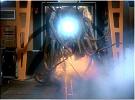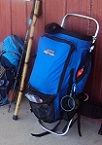Bullwinkle58
Posts: 11302
Joined: 2/24/2009
Status: offline

|
quote:
ORIGINAL: darbymcd
I think local bookstores have a profitable niche if they are responsive and well-managed (but that is basically true of most business). I also think there is a future in print-on-demand local bookstores as that technology improves/becomes more affordable. Not maintaining stock but having access to all the electronic books, including all the crazy small print runs and foreign language, could be a big money maker, especially to combine with some social space (ok, I am from Seattle so am dependant on coffeeshop culture...). There was a used-book store in Prague that also had coffee shop and pub aspects, with lots of readings, meetings, etc. It was a great space and if they could do POD for books I think it would have done well. The contractual issues haven't been worked out for the industry, but they are sort of scrambling to understand the entire electronic book thing at this point so it will take some time.
Having a local brick store staffed all the time to provide POD books is the worst of both ideas IMO. POD is inherently much more expensive per copy than a large offset run. Marginal costs for the offset book are pennies--all the labor is in the set-up. POD books don't have large materials investments (all that pulp sent out to stores and then back again unsold), but have very large per copy labor costs. It takes 100% of the labor of at least one individual to find the file, snd it to a high-speed B&W printer, wait, collate&cut, then get a graphics file from the server, send it to a different color printer, cut to size, laminate with plastic sheeting, then fit into a jig and glue the binding, wait for glue to dry (consuming workspace), do QA checks, then enter the volume into an inventory/accounting system before presenting it to the consumer for payment processing. Large POD outfits like Xlibris and iUniverse do all of this in an industrial environment, not behind the counter of a retail store, and even then their per unit costs are massively higher than a large offset print run. The main appeal of POD is not in cost or retail price, but in the fact that books need never go out of print. My $30 retail novel is POD in paper. It's been in print for over a decade, but has sold at $30 in numbers which would never have justified an offset run at that price. Ironically, it's that price which led to the low sales numbers--the snake eats its own tail.
E-books, once one gets past the sensory hurdles, eat paper books' lunch. POD from on-line still requires several day's shipping, and as I said the cost is prohibitive. Doing production at the shop level saves FedEx and some time, maybe, but the retailer still has big production scheduling and lay-out challenges. (How long will a walk-up customer wait if there are 30 POD books ahead of his in the store's production queue?) POD does save a huge amount of cost on the back end, but the retail customer, at least so far, doesn't see those savings in his price. Part of the problem to date with e-books is that large publishers are valiantly trying to continue to price them at paper prices, with few of the paper costs, hoping e-book readers are stupid. (Well, that's the best I've got. Anybody else have a better explanation?)
E-books are part of an overall disassociation of processes which has been occurring in publishing since at least the late 1980s. There are discrete tasks which must be accomplished to move a book from an author's mind to a reader's mind. Currently these processes are being untangled from each other, and this terrifies the big houses. They have financial models which rely on their hammerlock on many of these steps, but technology is eroding their control in a very systematic way. Many authors are business neophytes, but some are getting smarter. JKR's recent launch of her Harry Potter Web site is a huge shot across the bow of the NYC/London cabal. Major authors don't need big houses. They can buy their own freelance editing services, and have the brand names already. They can freelance promo tours without help. And they can e-distribute their creative works for next to nothing. Their gross margins go from 15-20% of retail, to something over 80%, just by hiring smart techie types to set them up. Remove the blockbuster authors from the big publishing houses and the whole financial house of cards comes down. It's happening before our eyes.
The #1 e-fiction author in the USA is a 20-something woman who lives in northern MN. She sells her books herself, without a publisher. She's made over $1 million in four years with virtually no overhead. You've almost certainly never heard of her.
_____________________________
The Moose
|
 Printable Version
Printable Version















 One good thing on being behind the times...No Olive Garden, amongst others.
One good thing on being behind the times...No Olive Garden, amongst others. 

 New Messages
New Messages No New Messages
No New Messages Hot Topic w/ New Messages
Hot Topic w/ New Messages Hot Topic w/o New Messages
Hot Topic w/o New Messages Locked w/ New Messages
Locked w/ New Messages Locked w/o New Messages
Locked w/o New Messages Post New Thread
Post New Thread